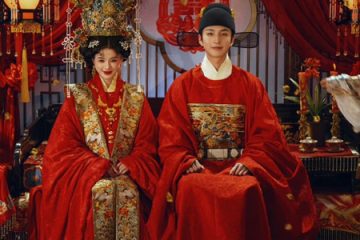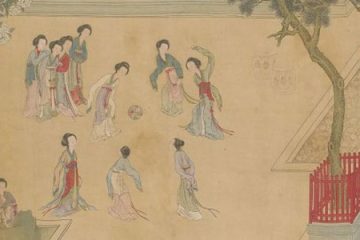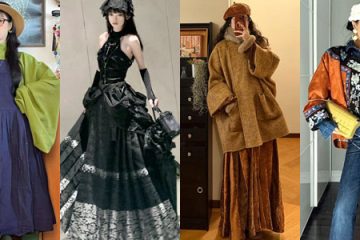History of Hanfu: From Ancient Roots to Modern Revival

Hanfu, the traditional clothing of the Han Chinese, embodies millennia of cultural heritage and aesthetic evolution. From its ancient origins to its contemporary resurgence, Hanfu has not only served as a symbol of identity but also as a canvas reflecting societal changes, technological advancements, and artistic expressions. This exploration delves into the rich history of Hanfu, highlighting key historical periods and the transformations that have shaped its enduring legacy.
Origins of Hanfu
Prehistoric and Mythological Beginnings
The roots of Hanfu trace back to the prehistoric era, where early forms of clothing were crafted from natural materials like animal skins and plant fibers. According to Chinese mythology, the Yellow Emperor, Huangdi, is credited with the invention of clothing, marking the genesis of Han Chinese attire. These early garments were functional, designed to protect against the elements and suited to various climates and activities.
Xia, Shang, and Zhou Dynasties (c. 2070–256 BCE)

During the Xia, Shang, and Zhou dynasties, Hanfu began to take a more defined shape. Clothing became an indicator of social status and professional roles. The Zhou Dynasty, in particular, introduced the “ruyi” (a type of robe) and the “shenyi” (a combined upper and lower garment), establishing foundational styles that would influence later Hanfu designs. Embroidery and intricate patterns became popular, signifying rank and prestige.
Han Dynasty to Tang Dynasty: Flourishing Elegance
Han Dynasty (206 BCE–220 CE)

The Han Dynasty is often considered a golden age for Hanfu. Clothing during this period emphasized simplicity and practicality without sacrificing elegance. The “hanfu” of this era featured flowing sleeves, wide belts, and layered garments that allowed for freedom of movement. Silk became a prominent material, symbolizing wealth and sophistication due to the elite access to this luxurious fabric through the Silk Road.
Three Kingdoms to Jin Dynasty (220–420 CE)
Following the Han Dynasty, the Three Kingdoms period and subsequent Jin Dynasty saw Hanfu styles influenced by military needs and political turmoil. Clothing became more versatile to accommodate various roles within the fragmented states. Motifs began to incorporate military symbols and practical designs suited for both governance and warfare.
Sui and Tang Dynasties (581–907 CE)

The Sui and Tang Dynasties marked a pinnacle in Hanfu’s aesthetic development. These periods were characterized by cultural openness, economic prosperity, and artistic flourishing. Hanfu became more elaborate, with vibrant colors, intricate embroidery, and the introduction of new garment types like the “pibo” (a cross-collar robe) and “quju” (a form of skirt). The Tang Dynasty, in particular, embraced foreign influences, leading to a fusion of styles that enhanced the richness of Hanfu designs.
Song to Ming Dynasty: Refinement and Regulation
Song Dynasty (960–1279 CE)

The Song Dynasty emphasized refinement and subtlety in Hanfu. Clothing became more subdued in color and decor compared to the Tang era, reflecting the period’s focus on scholarly pursuits and bureaucratic governance. The introduction of the “yuanlingpao” (a round-collared robe) and the “aoqun” (a blouse and skirt ensemble) showcased a move towards more structured and layered clothing.
Yuan Dynasty (1271–1368 CE)
Under Mongol rule, the Yuan Dynasty introduced significant changes to Hanfu. The blending of Han Chinese and Mongolic styles led to a distinct hybrid fashion. Clothing became looser and more functional to suit the nomadic lifestyle influences, yet still retained traditional Han elements. The Yuan period saw an increase in diversity of fabrics and patterns, reflecting the multicultural environment of the empire.
Ming Dynasty (1368–1644 CE)

The Ming Dynasty is renowned for restoring and refining Hanfu traditions after the Yuan period. There was a deliberate return to Han cultural roots, with a resurgence of traditional garment styles and techniques. The “mianfu” (ceremonial robes) and “yuanlingpao” continued to evolve, incorporating elaborate embroidery, rich colors, and symbolic motifs. The Ming era solidified the core elements of Hanfu that are recognizable even today.
Qing Dynasty and the Decline of Hanfu
Qing Dynasty (1644–1912 CE)

The Qing Dynasty, established by the Manchus, introduced the “qipao” and “changpao,” styles that diverged significantly from traditional Hanfu. The Manchu rulers enforced dress codes that marginalized Han customs, leading to the gradual decline of Hanfu as the dominant attire among Han Chinese. This period marked a critical transformation, where Han clothing traditions were both suppressed and indirectly preserved through resistance and adaptation.
Republican Era to the Early 20th Century

With the fall of the Qing Dynasty in 1912 and the establishment of the Republic of China, there was a push towards modernization and Westernization. Western clothing became a symbol of progress and modern identity, further diminishing the prevalence of Hanfu in daily life. However, Hanfu remained significant in cultural and ceremonial contexts, preserving its legacy amidst changing societal norms.
Modern Revival of Hanfu
Origins of the Revival Movement
The decline of Hanfu in the early 20th century gave way to a revival movement beginning in the late 20th century. As China underwent rapid modernization and globalization, a growing interest in cultural heritage sparked a renewed appreciation for traditional attire. The Hanfu movement gained momentum, especially among younger generations seeking to reconnect with their cultural roots.
Cultural Significance and Identity
Hanfu has come to symbolize Chinese cultural identity and pride. The revival emphasizes not just the clothing itself but also the philosophies, etiquettes, and aesthetics associated with it. Wearing Hanfu is often seen as an expression of cultural continuity and a tribute to ancestral traditions.
Fashion and Contemporary Adaptations
Modern designers have reimagined Hanfu, blending traditional elements with contemporary fashion trends. This fusion has made Hanfu more accessible and appealing to a broader audience. Innovations include the incorporation of modern fabrics, simplified silhouettes, and the adaptation of Hanfu styles for various occasions, from casual wear to formal events.
Hanfu in Media and Pop Culture
The presence of Hanfu in media, such as films, television series, and online platforms, has significantly contributed to its popularity. Historical dramas often depict Hanfu, inspiring viewers to embrace the style in real life. Additionally, social media platforms have provided a space for enthusiasts to showcase their Hanfu outfits, share styling tips, and organize meet-ups, fostering a vibrant community.
Educational and Cultural Initiatives
Educational institutions and cultural organizations play a crucial role in the Hanfu revival. Workshops, exhibitions, and cultural festivals celebrate Hanfu, providing opportunities for learning and appreciation. These initiatives ensure the transmission of knowledge regarding traditional garment-making techniques and the historical contexts of Hanfu.

Challenges and Future Prospects
Balancing Tradition with Modernity
One of the primary challenges in the modern Hanfu revival is balancing traditional authenticity with contemporary practicality. While efforts are made to preserve historical accuracy, there is also a desire to adapt Hanfu to suit modern lifestyles, which sometimes leads to debates within the community about the direction of the revival.
Commercialization and Cultural Appropriation
As Hanfu gains popularity, concerns about commercialization and cultural appropriation arise. Ensuring that Hanfu remains a respectful representation of Chinese heritage, rather than a trend or costume, is essential for its sustainable revival.
Global Influence and Cross-Cultural Exchange
Hanfu is also making its mark globally, contributing to cross-cultural exchanges and increasing awareness of Chinese culture worldwide. The international interest in Hanfu opens avenues for cultural diplomacy and mutual understanding but also necessitates sensitivity to cultural nuances.
Conclusion
The history of Hanfu is a testament to the enduring legacy of Han Chinese culture. From its ancient origins to its modern revival, Hanfu has continually evolved, reflecting the dynamic interplay between tradition and change. As a symbol of cultural identity and aesthetic expression, Hanfu not only preserves the rich heritage of the past but also inspires contemporary creativity and global appreciation. The ongoing revival of Hanfu underscores the importance of cultural continuity and the universal human desire to connect with one’s roots while embracing the future.
References
- “A Brief History of Chinese Clothing” – China Daily
- “Hanfu: The Ancient Chinese Garment Making a Modern Comeback” – The Culture Trip
- “The Evolution of Han Chinese Clothing” – Yale University Press
- “Fashioning Chinese Identity: The Modern Hanfu Movement” – Journal of Asian Studies



0 Comments